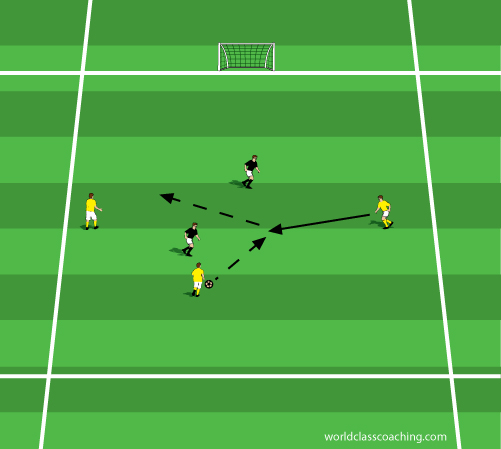- You are here:
- Home »
- Coaching »
- Proper Pacing on Passes
Proper Pacing on Passes
Today’s topic addresses the issue of proper pacing on passes.
When passing a ball too many players don’t take into consideration the pace (or weight) of their pass. In other words, the pass the ball without much regard for how hard or soft the pass should be hit. Frequently when they see a teammate who is far away they pass the ball but hit it so softly that when the ball finally gets there the defense has had time to adjust accordingly.
On the other hand, there are times when a pass should be hit extremely softly, usually in order to set up the next pass. For example, a player with the ball might pass the ball to their right in order to set up the second pass to the left. If the defense is trying to force the ball to the attackers right side (eliminating the pass to the attackers left) the passer might pass the ball softly which allows their teammate to make the second pass a through pass to the left. See diagram below for an example:

By hitting the first pass soft, it sets up the second pass. If the first pass was hit hard, it would make the second pass much more difficult because the pass would have to be from a greater distance and a harsher angle.
The key is for the player to know whether to hit the ball hard in order to get it there quickly and take advantage of the situation or to hit the ball softly to help set up the next pass.
In each instance, it will be dependent upon the circumstances. In order to determine whether a pass should be hit hard or soft, you have to think one, two or even three passes ahead. This requires trial and error and with more experience you can learn to do this more effectively.
